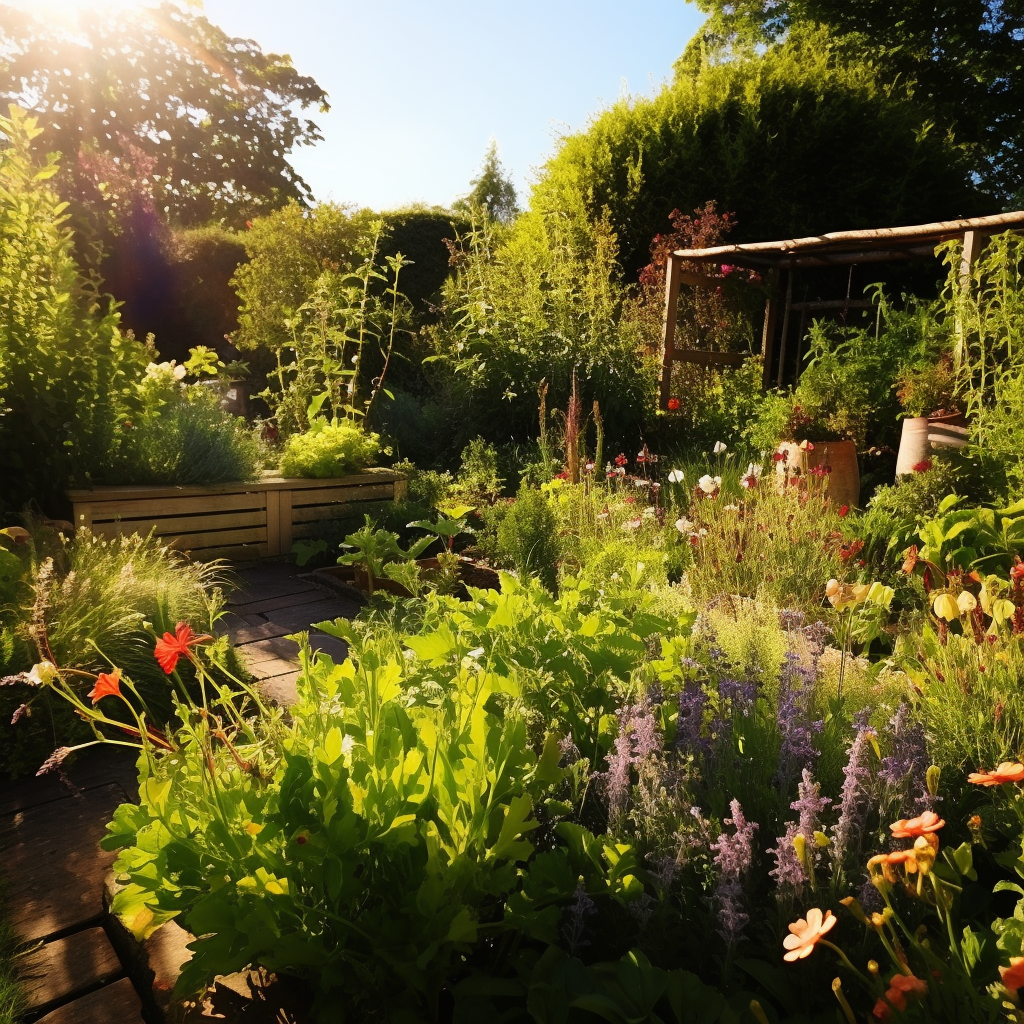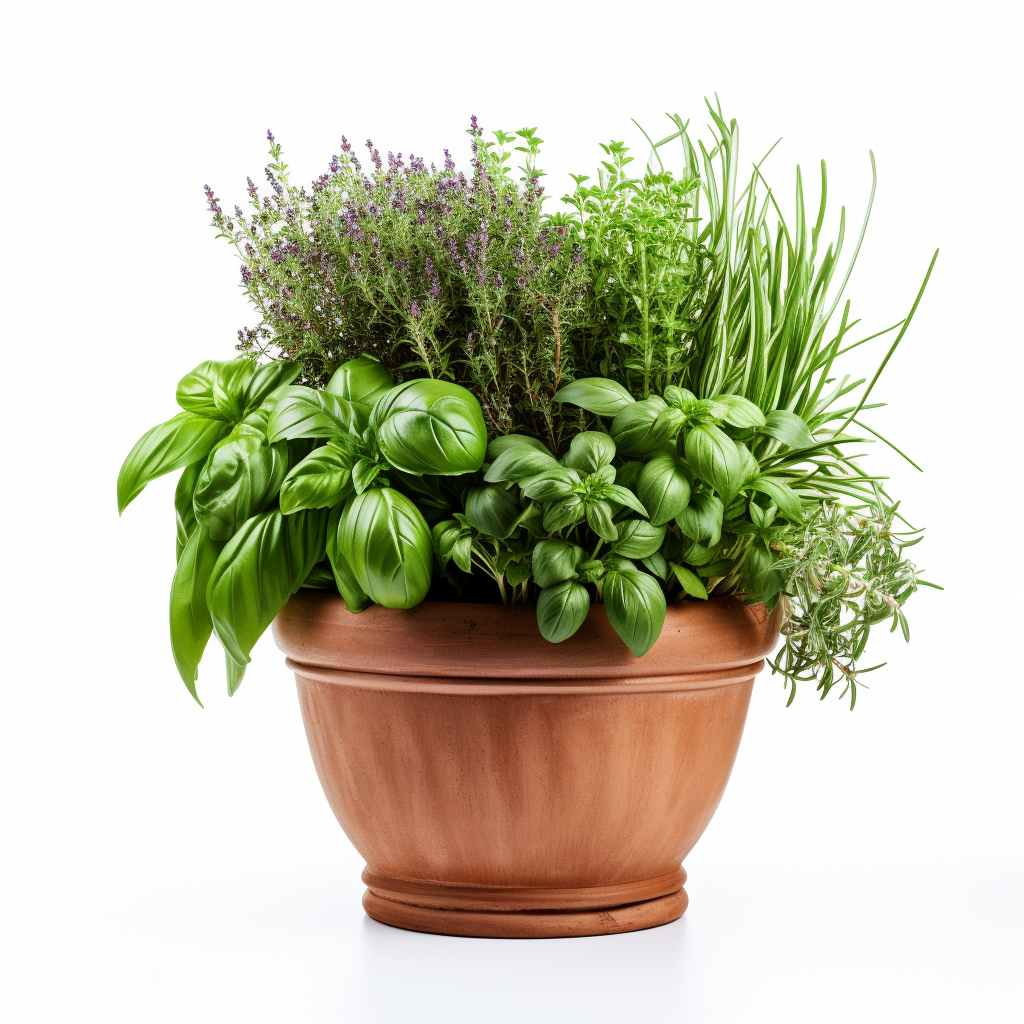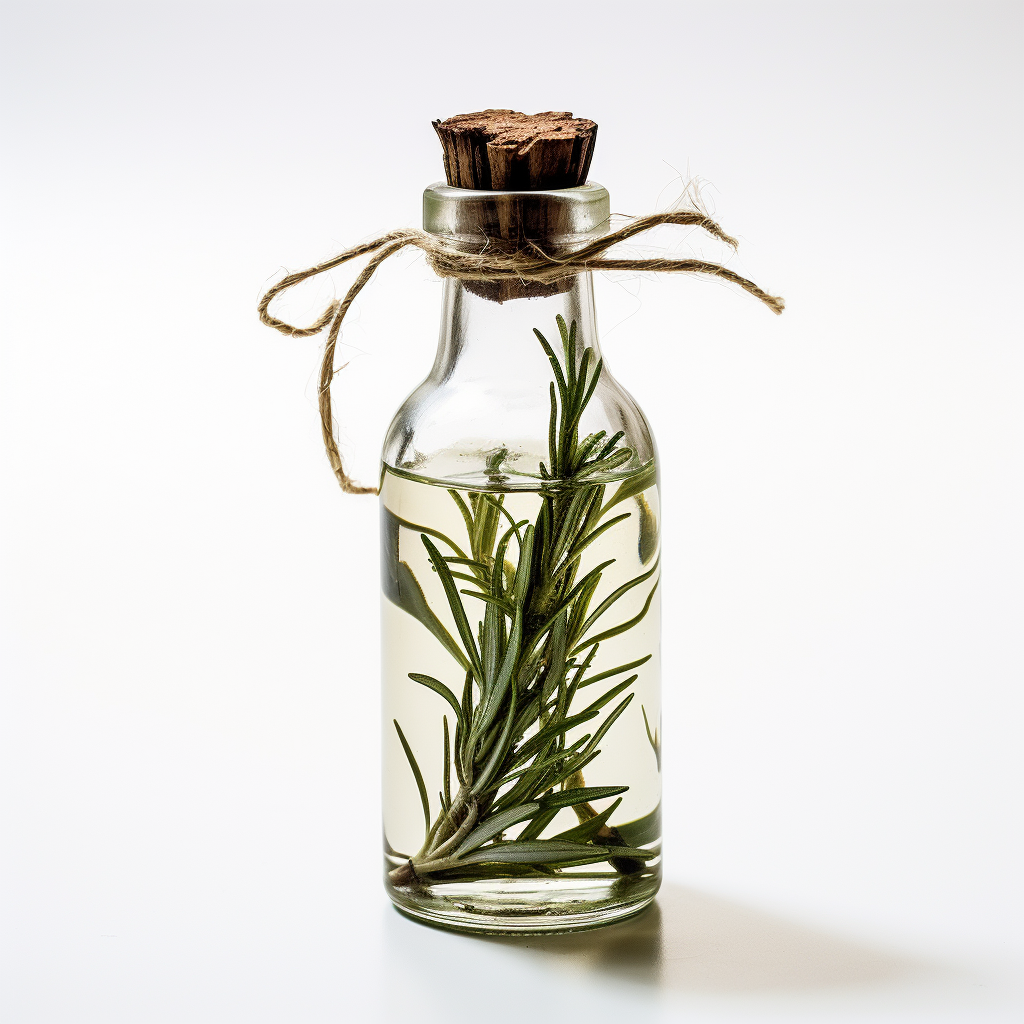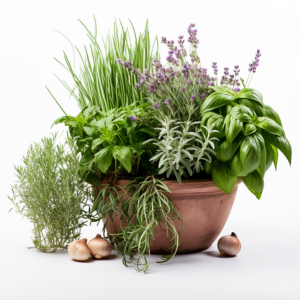Growing herbs at home is a gratifying and rewarding experience that allows you to boost your cooking with a burst of fresh and vibrant flavors. And it does not matter if you have a large garden or a small balcony set up, cultivating herbs is cheap, easy, and can transform your diet. Not only is herb growing great for your cooking, but you can save money at the check-out and you can get a little exercise while growing herbs.
In this basic beginner’s guide, we will begin to explore the world of herb gardening, from selecting the right herbs to growing them successfully, and finally, unleashing their full potential in your kitchen. I will add links to other articles that you may find of interest.

Picking the Right Herbs
When embarking on growing herbs, it’s essential to choose the right herbs for your needs and growing conditions. Here are some popular herbs that are easy to grow and can enhance a variety of dishes:
Basil
Known for its distinctive aroma and versatility in Italian cuisine, basil is a must-have herb for any herb garden. Varieties like Genovese basil and Thai basil offer unique flavors.
Rosemary
With its woody fragrance and robust flavor, rosemary is perfect for seasoning roasted meats and vegetables. It thrives in warm climates and requires well-drained soil. And it is also great as a hedging bush with its bright blue to purple flowers.
As with mint below, to grow from cuttings, you simply just cut off a 5 to 10 cm stalk, and plant into a container with good organic soil. After about 6 weeks you will see signs of growth. It is just that simple.
Mint
A refreshing herb that adds a delightful touch to beverages, desserts, and savory dishes alike. Mint is an excellent choice for beginners due to its resilience and ability to spread quickly. This is best grown in an container as many varieties love to send out roots and can easily take over a garden.
Thyme
Offering a delicate and earthy flavor, thyme is a versatile herb used in countless recipes. It prefers sunny locations with well-drained soil. Fantastic when used to marinate chicken or cooked with mushrooms.

Growing Herbs with Care
Now that you’ve chosen your herbs, let’s dive into the process of cultivating them with care:
Location and Soil
Most herbs thrive in sunny spots, receiving at least 6 hours of sunlight per day. However, some herbs like parsley and chervil can tolerate partial shade. Ensure the soil is well-drained and rich in organic matter.
Watering
While herbs appreciate consistent moisture, they don’t like to sit in waterlogged soil. Water them when the top inch of soil feels dry and be mindful not to overwater. Be careful over summer, as your pots or garden beds will dry out much faster, you may need to water some days more than once.
Pruning and Harvesting
Regular pruning promotes bushier growth and prevents your herbs from becoming leggy. Harvest herbs by trimming off a few sprigs, allowing the plant to continue growing. Remember to pinch off the flowers to maintain the plant’s energy for foliage growth. With chives and parsley, using them every few days makes these plants nearly perpetual.
Growing Herbs in Container
If you have limited space or live in an apartment, don’t worry! Herbs can be grown successfully in containers. Use pots with good drainage, and ensure they are large enough to accommodate the herb’s root system. Place them in a sunny spot (at least 6 hours a day) and water regularly, adjusting the frequency based on the pot size and weather conditions.
Companion Planting
Certain herbs thrive when planted alongside specific plants. For example, planting basil near tomatoes can enhance the tomatoes’ flavor and repel pests. Adding onions such as spring onions or chives with tomatoes will also repel pests.
Research companion planting techniques to maximize the health and productivity of your herb garden. With even just a few extra companion plants, just imagine the amount of extra produce you can grow.
Organic Pest Control
Keep an eye out for pests that may target your herbs, such as aphids, snails, slugs, or caterpillars. Use organic pest control methods, like neem oil or insecticidal soaps, to protect your herbs without introducing harmful chemicals. I will add a new article that will give you some really good and proven recipes for organic pesticides.
Protection for Herbs over Winter
Some herbs, like rosemary and thyme, are perennial and can survive the winter outdoors in milder climates. However, if you live in a colder region, you may need to bring your potted herbs indoors or provide protection, such as covering them with mulch, to help them survive during the colder months. During the cold weather, you will find that your preservation of fresh herbs will come into play. More about this below.
Propagation
Expand your herb garden by propagating your existing plants. Many herbs can be propagated through stem cuttings or by dividing the root ball. This allows you to grow more plants from your favorites without purchasing new ones.
Don’t forget to let some of your plants go to seed. Once collected you have an endless supply of new plants. When your plants go into flower, let them dry, when they are crumbly, pull them off and store them in a sealed container until you are ready to replant.
Preserving your Herbs
To enjoy your herbs even when they are out of season, consider preserving them. Drying herbs is a common method—simply hang small bunches of herbs upside down in a well-ventilated area until they are completely dry. Store the dried herbs in airtight containers away from direct sunlight.
Alternatively, you can chop and freeze herbs in ice cube trays with water or olive oil for convenient use in cooking. This works wonderfully for parley and chives, as they are a little more robust than herbs such as basil.
Creative Ways to Use Fresh Herbs
As your herbs flourish, it’s time to unleash their flavors and explore the many ways to add them to your cooking and beyond.

Cooking
Fresh herbs can elevate a simple dish to new heights. Sprinkle chopped herbs on top of pasta, soups, salads, or roasted vegetables for an instant burst of flavor.
Infused Oils and Vinegars
Create your own infused oils and vinegars by steeping herbs in high-quality olive oil or vinegar. These can be used in dressings, marinades, or as a dipping sauce. A good vinegar would be a simple white wine or apple cider vinegar.
Herbal Teas
Many herbs, such as chamomile, lavender, and lemon verbena, make delightful herbal teas. Harvest the leaves, let them dry, and infuse them in hot water for a soothing and aromatic beverage.
Homemade Beauty Products
Harness the natural goodness of herbs to create DIY beauty products. Infuse herbs like lavender or rosemary in carrier oils to make homemade facial toners or herbal-infused bath salts.
Embarking on a journey to grow herbs at home is a rewarding experience that allows you to explore a world of flavors right at your doorstep. From selecting the right herbs to growing them with care, you can create a herb garden that adds freshness and sparkle to your kitchen.
Whether you’re a seasoned cook or a beginner in the kitchen, bringing in fresh herbs into your dishes will elevate them to new heights. So, don’t wait any longer—grab a shovel, pick your favorite herbs, and let the delightful adventure of herb gardening begin.
Remember, gardening is an ongoing learning process, so don’t be afraid to experiment and discover what works best for your specific herbs and growing conditions.
